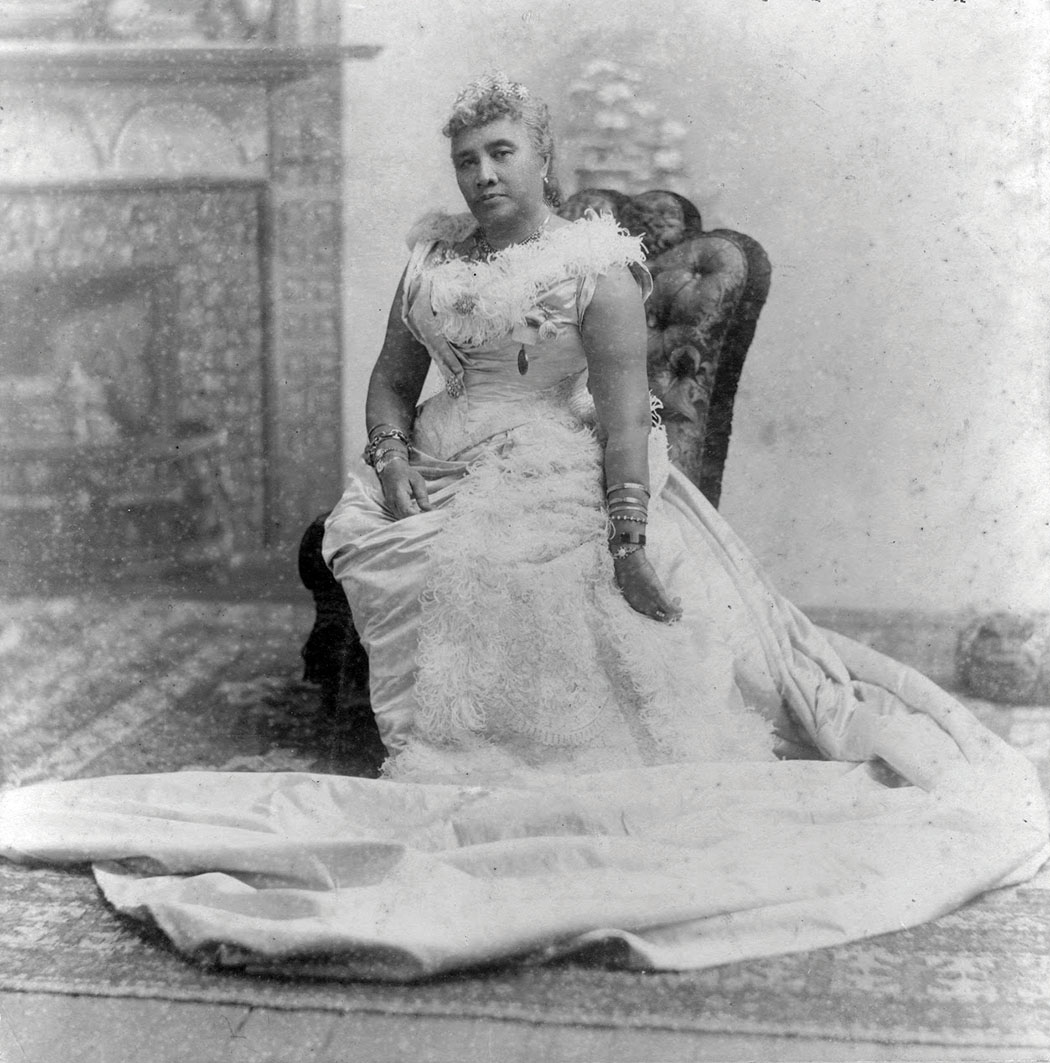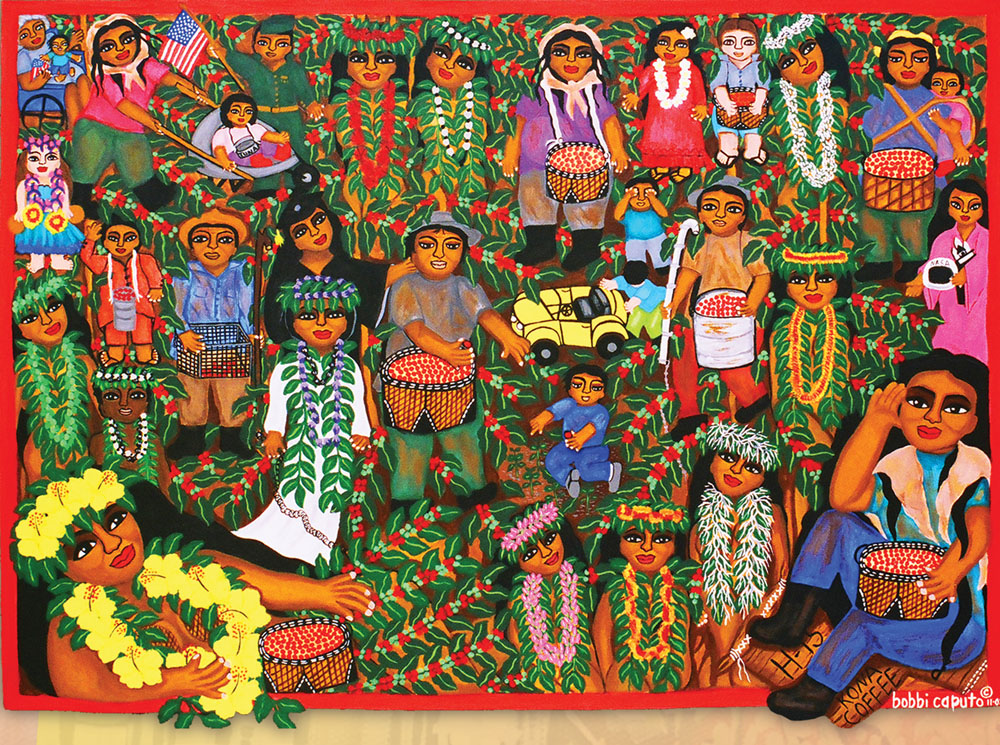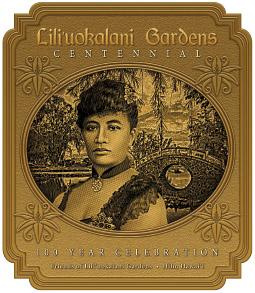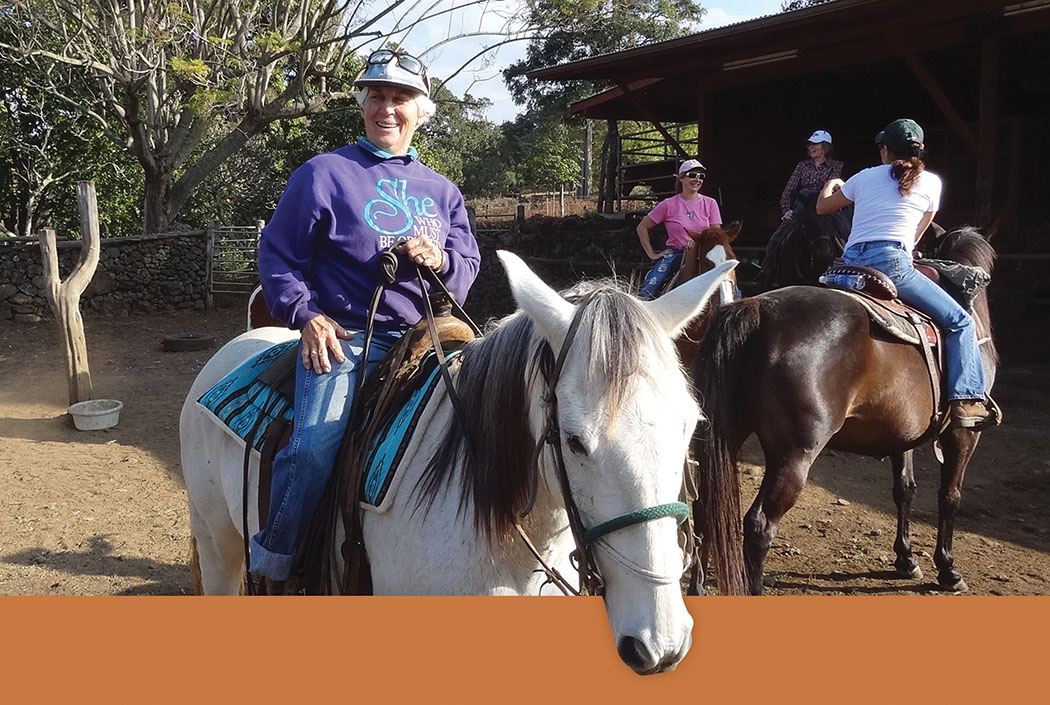A Brief History of Queen Lili‘uokalani
 By Peter T. Young
By Peter T. Young
She was born Lydia Lili‘u Loloku Walania Wewehi Kamaka‘eha to High Chiefess Anale‘a Keohokālole and High Chief Caesar Kaluaiku Kapa‘akea on September 2, 1838.
At that time, children often were named in commemoration of an event. Kuhina Nui (co-regent) Kīna‘u had developed an eye infection at the time of Lili‘u’s birth. She gave the child the names Lili‘u (smarting), Loloku (tearful), Walania (a burning pain), and Kamaka‘eha (sore eyes).
In her youth she was called “Lydia” or “Lili‘u.” She was also known as Lydia Kamaka‘eha Pākī, with the chosen royal name of Lili‘uokalani, and her married name was Lydia K. Dominis.
As was the custom, she was hānai (adopted) by Abner Pākī and his wife Laura Kōnia. The Pākīs reared her with their birth daughter, Bernice Pauahi. The two girls developed a close, loving relationship. Together they attended the Chief’s Children’s School (Royal School), a boarding school, and were known for their studious demeanor. Lili‘u’s brother, David Kalākaua, was also among the royal students educated there.
There Lili‘u learned and became fluent in English and studied music and the arts. Her talent for music blossomed and she eventually wrote more than 150 songs including, “Aloha Oe.”

At 24, on September 16, 1862, Lili‘u married John O. Dominis. Dominis’ father, a ship’s captain, had built a New England style home, named Washington Place, for his family. They lived with his widowed mother. The home later served as the former official residence of Hawai‘i’s Governor and today serves as a museum.
On February 12, 1874, nine days after the passing of King Lunalilo, an election was held between the repeat candidate David Kalākaua, Lili‘u’s brother, and Queen Emma—widow of King Kamehameha IV. Kalākaua won.
At noon of the tenth day of April, 1877, the booming of the cannon was heard which announced that King Kalākaua had named Lili‘uokalani as heir apparent to the throne of Hawai‘i. Lili‘u’s brother changed her name when he named her Crown Princess, calling her Lili‘uokalani, “the smarting of the royal one.”
From this point on she was referred to as Crown Princess with the name Lili‘uokalani. One of her first acts as Crown Princess was to tour the island of O‘ahu with her husband, sister, and brother-in-law.
King Kalākaua died on January 20, 1891. Because he and his wife Queen Kapi‘olani did not have any children, his sister, Lili‘uokalani succeeded him to the Hawaiian throne.
Kalākaua had been a staunch supporter of native Hawaiian civil rights. In part, this led to a rebellion in 1887 forcing him to sign a new constitution relinquishing his powers as head of state and relegated him to a figurehead.
Queen Lili‘uokalani sought to amend the constitution to restore some of the power lost during the reign of her brother. Local sugar planters and businessmen feared a loss of revenue and influence and instigated an overthrow.
On the afternoon of January 16, 1893, 162 sailors and Marines aboard the USS Boston in Honolulu Harbor came ashore under orders of neutrality.
To avoid bloodshed, the Queen yielded her throne on January 17, 1893 and temporarily relinquished her throne to “the superior military forces of the United States.” A provisional government was established.
The Queen issued a statement yielding her authority to the United States Government rather than to the Provisional Government:
“I Liliuokalani, by the Grace of God and under the Constitution of the Hawaiian Kingdom, Queen, do hereby solemnly protest against any and all acts done against myself and the Constitutional Government of the Hawaiian Kingdom by certain persons claiming to have established a Provisional Government of and for this Kingdom.”
“That I yield to the superior force of the United States of America whose Minister Plenipotentiary, His Excellency John L. Stevens, has caused United States troops to be landed at Honolulu and declared that he would support the Provisional Government.”
“Now to avoid any collision of armed forces, and perhaps the loss of life, I do this under protest and impelled by said force yield my authority until such time as the Government of the United States shall, upon facts being presented to it, undo the action of its representatives and reinstate me in the authority which I claim as the Constitutional Sovereign of the Hawaiian Islands.”
In 1895, Lili‘uokalani was imprisoned for eight months in ‘Iolani Palace for her alleged knowledge of a counterrevolutionary attempt by her supporters.
On May 18, 1896, at 6:30am, Lili‘uokalani was baptized and confirmed by Bishop Willis into the Episcopal Church, although she had been a long-time member of Kawaiaha‘o Church.
In her Deed of Trust dated December 2, 1909, which was later amended in 1911, Lili‘uokalani entrusted her estate to provide for orphan and destitute children in the Hawaiian Islands, with preference for Hawaiian children. Her legacy is perpetuated through the Queen Lili‘uokalani Children’s Center.
Queen Lili‘uokalani died at Washington Place on November 11, 1917, at the age of 79. After a state funeral, her remains were placed in the Royal Mausoleum at Mauna ‘Ala. ❖
Connect with Peter: ToTakeResponsibility.blogspot.com


